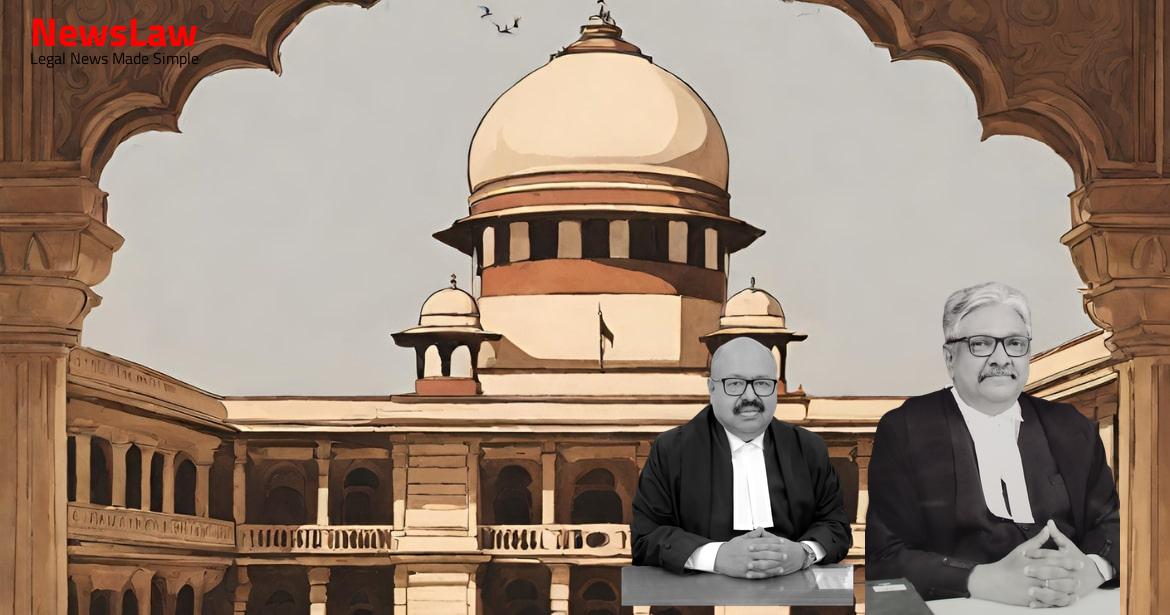Appointment procedure to the said posts is guided by the Jharkhand Superior Judicial Service (Recruitment, Appointment and Conditions of Service) Rules, 2001 (‘the 2001 Rules’). The following criteria for selection was specified therein:- “Preliminary Entrance Test (1) The Preliminary Entrance Test shall consist. IPC (2) The Preliminary Entrance Test shall be of 100 in aggregate (3) Duration of Preliminary Entrance Test shall be of two 3 hours.
Also Read: https://newslaw.in/case-type/criminal/quashing-of-criminal-complaint-in-commercial-dispute/
& C.P.C.)
(ii) Law of Evidence (iii) Law of Limitation 50 Marks Paper- II Substantive Law 100 Marks (i) Constitution of India (ii) Indian Penal Code (iii) Law of Contract (iv) Sale of Goods Act (v) Transfer of Property Act (vi) Negotiable Instrument Act (vii) Law relating to Motor Vehicle Accident Claim (viii).
A candidate irrespective of the marks obtained by him in the main examination was required to get at least 20 marks out of the aggregate 40 in the viva-voce test. Based on such minimum qualifying marks, the High Court may decide to call for viva-voce such number of candidates, in order of merit in written examination, depending upon the number of vacancies available as it may appropriately decide: Provided that in the case of candidates belonging to scheduled castes and scheduled tribes and candidates belonging to other reserved categories, such minimum 5 qualifying marks may not be higher than 45% of the total aggregate marks : Provided also that in determining the suitability of a particular candidate based on both the minimum qualifying marks as well as in order of merit, the total marks obtained in the examination as a whole and the marks obtained in any individual paper, both shall also be taken into consideration, depending upon any guidelines that the High Court may issue in this behalf in the Regulations to be framed for this purpose.
If the marks secured at the main written examination of the candidates also are found equal then the order shall be decided in accordance with the marks obtained in the Preliminary Written Entrance Test. The said paragraph of the Regulation stipulates:- 6 “(12) No candidate irrespective of the marks obtained by him in the Main Examination, shall be eligible for selection for appointment, if he obtains less than 20 marks out of aggregate of 40 in the Viva-Voce Test.” We have already quoted Rule 21 of the 2001 Rules where minimum of 30% marks in the viva-voce has been prescribed as the qualification criteria. The Full Court resolves to approve the final result list of 63 Candidates who have appeared for viva voce (list enclosed with this resolution and marked at Flag “X”) It is hereby resolved to recommend the names of following 13 top (merit wise) candidates to the State Government for issuance of necessary notification/s for their appointment to the post of District Judge after completing/undertaking the investigation/enquiry relating to the candidates credentials as per Rule 23 & 24 of Jharkhand Superior Judicial (Recruitment, Appointment and Conditions of Service) Rules, 2001: Another set of candidates have filed the second writ petition registered as Writ Petition (Civil) No 921 of 2023.
Also Read: https://newslaw.in/case-type/civil/willful-disobedience-and-rectification-of-court-orders/
Sud, learned senior counsel whereas the High Court of Jharkhand has been represented by Mr. Counter affidavit has been filed by the State in which also no definitive stand has been taken on the legality of the Resolution in the Full Court meeting of the High Court. On 27 February 2017, after the viva-voce was conducted, the Administrative Committee of the High Court passed a resolution by which it decided to apply the same minimum cut- off marks which were prescribed for th e written examination as a qualifying criterion in the viva-voce.
The statutory rule coupled with the scheme of examination and the 2015 examination notification would have generated an expectation in the petitioners that the merit list of selected candidates will be drawn on the basis of the aggregate of total marks received in the written examination and the viva voce. The Administrative Committee of the High Court apprehended that a candidate who performed well in the written examination, even though they fared badly in the viva voce, would get selected to the post of District and Sessions Judge. The High Court, being a constitutional and public authority, has to bear in the mind the principles of good administration while performing its administrative duties.
The merit list of the selected candidates shall be prepared on the basis of the aggregate marks secured by the candidate in the written examination and viva voce.” (emphasis supplied) 56.Under the unamended 1961 Rules, the High Court was expected to draw up the merit list of selected candidates based on the aggregate marks secured by the candidates in the written examination and the viva voce, without any requirement of a minimum cut-off for the viva voce. It is also important to highlight that the requirement of a minimum cutoff for the viva voce was introduced after the viva voce was conducted. The minimum marks for interview had never been adopted by the Andhra Pradesh High Court earlier for selection of District & Sessions Judges, (Grade II). The Full Court however, introduced a new requirement as to minimum marks in the interview by an interpretative process which is not warranted and which is at variance with the interpretation adopted while implementing the current selection process and the earlier selections.
Therefore, we hold that the action of Full Court in revising the merit list by adopting a minimum percentage of marks for interviews was impermissible.” The same view has later been taken by a Coordinate Bench of this Court in the case of Hemani Malhotra -vs- High Court of Delhi [(2008) 7 SCC 11]. His argument is that in those three authorities, the marking in viva-voce was the subject of dispute whereas in the present writ petitions, it is on aggregate marking that the High Court administration has raised the bar. After the State Government have taken a decision as to which of the candidates in accordance with the list should be appointed, the list of selected candidates for appointment is forwarded to the High Court then will have to enter such candidates on a Register maintained by it. 16 1678-1 GS, II—71/3802, dated April 22, 1971, on the subject noted above, and to say that after careful consideration of the recommendations of the Punjab and Haryana High Court for appointment of first fifteen candidates to the Haryana Civil Service (Judicial Branch), the State Government have taken the view that it would be appropriate that only the first seven candidates should be appointed to the Haryana Civil Service (Judicial Branch) and a notification has been issued accordingly.
It may be mentioned that the last candidate appointed against un-reserved vacancies out of the merit list prepared on the basis of the Haryana Civil Service (Judicial Branch) Examination held in May 1969, secured 55.67% marks.
It was, however, contended by Dr Singhvi on behalf of the respondents that since Rule 8 of Part C makes candidates who obtained 45% or more in the competitive examination eligible for appointment, the State Government had no right to introduce a new rule by which they can restrict the appointments to only those who have scored not less than 55%. There is nothing arbitrary in fixing the score of 55% for the purpose of selection, because that was the view of the High Court also previously intimated to the Punjab Government on which the Haryana Government thought fit to act. Clause (c) of Rule 14 of the 1981 Rules lays down that a candidate must have “passed Assistant Teacher Recruitment Examination conducted by the Government”.
Though, the minimum qualifying marks were set out in the Guidelines for ATRE 2018, it is not the requirement of the 1981 Rules that such stipulation must be part of the instrument notifying ATRE.
In that case, the further question would be at what stage can such minimum qualifying marks be determined and whether by necessity such minimum qualifying marks must be declared well before the examination. By virtue of stipulation of minimum qualifying marks for interview, certain candidates, who otherwise, going by their aggregate would have been in zone of selection, found themselves to be disqualified. State of A.P., (2008) 3 SCC 512 : (2008) 1 SCC (L&S) 841], where a candidate could reasonably assume that there was no stipulation regarding minimum qualifying marks for interview, and that the aggregate of marks in written and oral examination must constitute the basis on which merit would be determined, no such situation was present in the instant case. In order to lend force to this submission, it was argued that Shiksha Mitras who appeared in ATRE 2018 and ATRE 2019 formed a homogeneous class and, therefore, the norm that was available in ATRE 2018 must be applied. Surender Singh, (2019) 8 SCC 67 : (2019) 2 SCC (L&S) 464] and Jharkhand Public Service 20 Commission v. Surender Singh, (2019) 8
SCC 67 : (2019) 2 SCC (L&S) 464] and Jharkhand Public Service Commission v.
The three Judge Bench in Tej Prakash Pathak (supra) had referred to the judgment in the case of Subhas Chandra Marwaha (supra) to express doubt over correctness of the judgment in the case of K. Manjusree (supra) and Hemani Malhotra (supra) and finds that the course for selection to the posts involved in that case was different from that which was found to be impermissible in K. The very expression “aggregate” means combination of two or more processes and in the event the procedure for arriving at the aggregate has been laid down in the applicable Rules, a separate criteria cannot be carved out to enable 23 change in the manner of making the aggregate marks.
Firstly, the decision of the High Court was contrary to Rule 2(c)(iii) which stipulated that the merit list would be drawn up on the basis of the marks obtained in the aggregate in the written examination and the viva- voce; secondly, the scheme which was notified by the High Court on 13 December 2012 clearly specified that there would be no cut off marks in respect of the viva-voce; thirdly, the notification of the High Court dated 30 September 2015 clarified that the process of short listing which would be carried out would be only on the basis of the length of practice of the members of the Bar, should the number of candidates be unduly large; and fourthly, the decision to prescribe cut off marks for the viva-voce was taken much after the viva-voce tests were conducted in the month of January 2017.
Case Title: SUSHIL KUMAR PANDEY Vs. THE HIGH COURT OF JHARKHAND (2024 INSC 97)
Case Number: W.P.(C) No.-000753 / 2023



